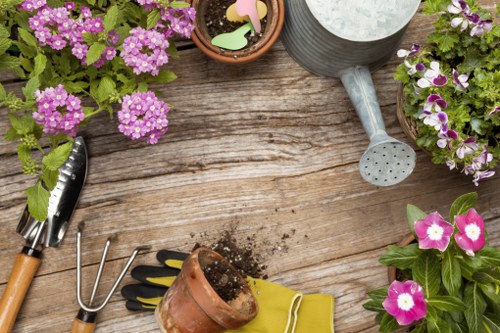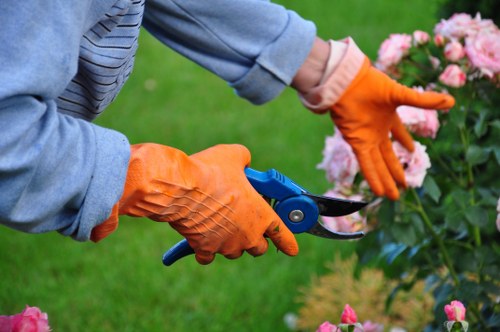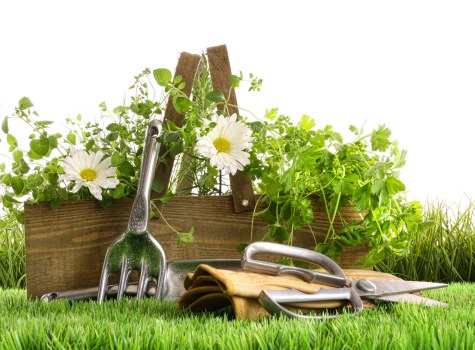Mastering Hedge Trimming in Poplar: A Comprehensive Guide

Hedge trimming in poplar is an essential practice for maintaining the health and aesthetics of your landscape. Poplar trees are known for their rapid growth and lush foliage, making them a popular choice for creating natural boundaries and privacy screens. Proper trimming not only enhances the beauty of your poplar hedges but also promotes healthier growth and prevents potential issues such as disease and pest infestations.
Understanding the optimal timing for hedge trimming is crucial. Poplar trees generally respond best to pruning during their dormant season, typically in late winter or early spring before new growth begins. This timing helps minimize stress on the trees and encourages robust growth in the upcoming season.
Before you begin trimming, it's important to assess the current condition of your poplar hedge. Look for any signs of damage, disease, or pest activity. Addressing these issues before trimming can prevent further complications and ensure a smoother pruning process.

Tools and Equipment for Effective Hedge Trimming
Having the right tools and equipment is vital for efficient and precise hedge trimming in poplar. Investing in quality pruning shears, loppers, and hedge trimmers can make the job easier and yield better results. Ensure that all tools are clean and sharp to prevent damage to the trees and reduce the risk of spreading diseases.
Safety should always be a priority when trimming hedges. Wear protective gear such as gloves, safety glasses, and sturdy footwear to protect yourself from potential injuries. Additionally, make sure your tools are in good working condition and properly maintained.
For larger hedges, consider using a pole pruner or an electric hedge trimmer to reach higher branches without the need for ladders. These tools can save time and effort, especially when dealing with dense or tall poplar hedges.

Step-by-Step Guide to Trimming Poplar Hedges
Trimming poplar hedges requires a systematic approach to ensure even and healthy growth. Follow these steps for effective hedge trimming:
- Assess the Hedge: Begin by examining the overall shape and health of the hedge. Identify any dead, diseased, or damaged branches that need to be removed.
- Plan Your Cuts: Decide on the desired shape and size of the hedge. Poplar trees can be trimmed into various forms, such as formal lines or natural shapes, depending on your preference.
- Start Trimming: Begin at the base of the hedge and work your way up. Use pruning shears for smaller branches and loppers or hedge trimmers for larger sections.
- Maintain Evenness: Ensure that each side of the hedge is trimmed to the same length and shape. This promotes symmetry and a uniform appearance.
- Clean Up: Remove all trimmed branches and debris from the area to prevent disease and pest infestations.

Common Mistakes to Avoid When Trimming Poplar Hedges
Trimming poplar hedges might seem straightforward, but avoiding common mistakes can significantly improve the outcome. Here are some pitfalls to watch out for:
- Over-Trimming: Removing too much foliage can stress the trees and inhibit growth. Aim for a conservative trim, removing no more than one-third of the hedge at a time.
- Improper Timing: Trimming at the wrong time of year can disrupt the trees’ growth cycles and make them more susceptible to disease.
- Ignoring Health Issues: Failing to address underlying health problems before trimming can exacerbate issues and lead to more significant problems down the line.
- Uneven Cuts: Inconsistent trimming can result in a lopsided appearance. Take your time to ensure symmetry and balance.

Maintaining Your Poplar Hedge After Trimming
Proper maintenance after trimming is essential to keep your poplar hedge healthy and vibrant. Regularly monitor the hedge for signs of new growth, pests, or diseases. Applying a balanced fertilizer in the spring can promote strong growth and enhance the hedge’s overall health.
Watering is also crucial, especially during dry periods. Ensure that the hedge receives adequate moisture to support its rapid growth. However, avoid overwatering, as excessive moisture can lead to root rot and other issues.
In addition to watering and fertilizing, periodic inspections can help catch and address problems early. Promptly remove any diseased or damaged branches to maintain the hedge’s integrity and appearance.
Benefits of Regular Hedge Trimming
Regular hedge trimming offers numerous benefits for poplar trees and your landscape:
- Enhanced Aesthetics: Well-trimmed hedges contribute to a neat and attractive appearance, boosting your property’s curb appeal.
- Healthier Growth: Pruning promotes better air circulation and sunlight penetration, reducing the risk of disease and encouraging vigorous growth.
- Safety: Regular trimming removes hazardous branches that could pose risks during storms or high winds.
- Space Management: Trimming helps control the size and shape of the hedge, preventing it from becoming unruly or overwhelming your garden space.
Choosing the Right Trimming Technique
Different trimming techniques can yield various results, depending on your desired outcome. Here are some common methods used for poplar hedges:
- Shearing: Using hedge shears to create a uniform shape is ideal for formal hedges. This technique involves trimming the hedge to flat tops and straight sides.
- Scoping: For a more natural look, remove larger branches and allow the hedge to retain its organic shape.
- Heading: Cutting back the ends of branches to promote bushier growth can be beneficial for dense poplar hedges.
Professional vs. DIY Hedge Trimming
Deciding between hiring a professional or tackling hedge trimming yourself depends on several factors, including the size of your hedge, your expertise, and the tools available. While DIY trimming can be cost-effective and satisfying, professional arborists offer expertise and precision that can result in superior outcomes.
Professionals can also safely handle large or high hedges that might be challenging or dangerous for homeowners to manage. Additionally, they can provide valuable advice on maintaining the health and appearance of your poplar trees.
Ultimately, the choice depends on your comfort level and the specific needs of your hedges. For extensive or complex trimming tasks, seeking professional assistance may be the best option.
Environmental Considerations in Hedge Trimming
When trimming poplar hedges, it's important to consider the environmental impact of your actions. Sustainable pruning practices help preserve the ecosystem and promote biodiversity. Here are some tips:
- Use Eco-Friendly Tools: Opt for manual tools or energy-efficient electric trimmers to reduce your carbon footprint.
- Dispose of Waste Responsibly: Recycle or compost green waste to minimize landfill contributions and support soil health.
- Encourage Wildlife: Avoid over-trimming to maintain habitats for birds and beneficial insects that contribute to a healthy garden environment.
The Importance of Regular Inspection
Regularly inspecting your poplar hedges is key to identifying issues early and maintaining their overall health. Look for signs of pests, such as webbing or chewed leaves, and treat infestations promptly. Additionally, monitor for diseases like powdery mildew or leaf spot, which can spread if not addressed.
Early detection allows for timely intervention, preventing minor issues from becoming major problems. Incorporate inspection into your routine maintenance schedule to keep your hedges in optimal condition.
Seasonal inspections can also help you prepare your hedges for changing weather conditions, ensuring they remain resilient year-round.
Optimizing Growth Through Proper Nutrition
Providing your poplar hedges with the right nutrients is essential for healthy growth and resilience. A balanced fertilizer, applied in early spring, can supply the necessary nutrients to support vigorous growth and strong stems.
Inorganic fertilizers offer immediate nutrient availability, while organic options, such as compost or well-rotted manure, improve soil structure and promote beneficial microbial activity. Combining both types can yield the best results for your poplar hedges.
Regular soil testing can help determine any specific nutrient deficiencies, allowing you to tailor your fertilization strategy accordingly and maintain optimal hedge health.
Pruning Techniques for Different Seasons
Different seasons require different pruning approaches to ensure the health and beauty of your poplar hedges. Understanding these seasonal techniques can enhance your trimming results:
- Winter Pruning: Conducted during dormancy, winter pruning shapes the hedge and removes dead or diseased wood without stimulating new growth.
- Spring Pruning: Early spring pruning encourages strong growth and helps define the hedge's shape as the trees begin to bud.
- Summer Pruning: Light trimming in summer can control excessive growth and maintain the desired shape without causing significant stress.
- Autumn Pruning: Generally avoided, as late-season pruning can leave cuts vulnerable to winter damage.
Dealing with Common Pests and Diseases
Poplar hedges are susceptible to various pests and diseases that can compromise their health and appearance. Common issues include:
- Aphids: These small insects feed on sap, causing distorted growth and leaf curling. Use natural predators or insecticidal soaps to manage infestations.
- Canker: A fungal disease that causes sunken areas on branches. Prune affected areas and apply fungicides as needed.
- Leaf Spot: Characterized by dark spots on leaves, this disease can weaken the tree. Remove infected leaves and ensure good air circulation to prevent spread.
- Scale Insects: These pests attach to stems and leaves, sucking sap and weakening the plant. Use horticultural oils to eradicate scale infestations.
Enhancing Hedge Health with Mulching
Mulching around your poplar hedges can provide numerous benefits, including moisture retention, temperature regulation, and weed suppression. Organic mulches, such as wood chips or bark, also improve soil structure and add nutrients as they decompose.
Apply a layer of mulch 2-4 inches thick around the base of the hedge, avoiding direct contact with the stems to prevent rot. Replenish the mulch annually to maintain its effectiveness and continue supporting hedge health.
Proper mulching not only enhances the appearance of your hedges but also contributes to a sustainable and healthy garden ecosystem.
Tools Maintenance for Longevity
Maintaining your trimming tools is essential for efficient hedge trimming and the longevity of your equipment. Regularly clean your tools after each use to remove sap, dirt, and debris that can cause rust and dull blades.
Sharpen blades frequently to ensure clean cuts, reducing the risk of damaging the trees and promoting faster healing of pruning wounds. Properly stored tools, in a dry and secure environment, will last longer and perform better over time.
Investing time in tool maintenance can save you money and enhance the quality of your hedge trimming efforts.
Final Thoughts on Hedge Trimming in Poplar
Hedge trimming in poplar is a rewarding endeavor that enhances both the beauty and health of your landscape. By following proper techniques, using the right tools, and adhering to seasonal pruning practices, you can maintain lush, vibrant, and well-shaped poplar hedges year-round.
Whether you choose to undertake trimming yourself or hire a professional, investing in the care of your poplar hedges pays off through improved aesthetics and healthier trees. Embrace these practices to enjoy a stunning and thriving garden that stands the test of time.
Ready to transform your landscape with expertly trimmed poplar hedges? Contact us today to schedule your hedge trimming service and ensure your trees remain beautiful and healthy.